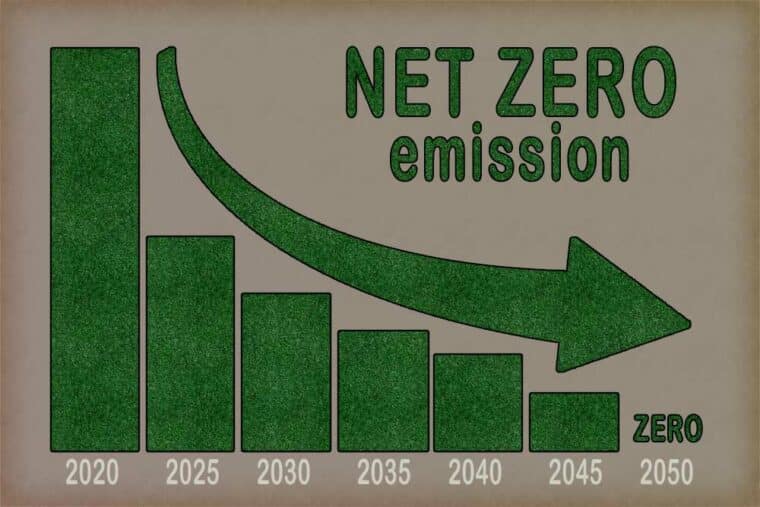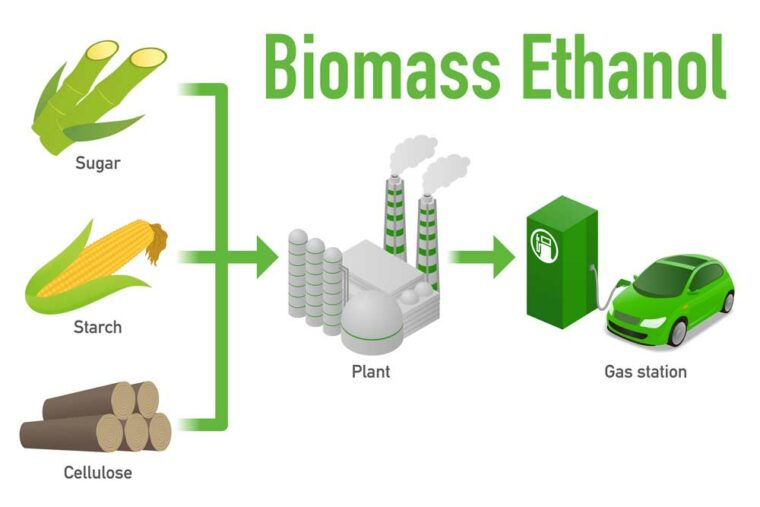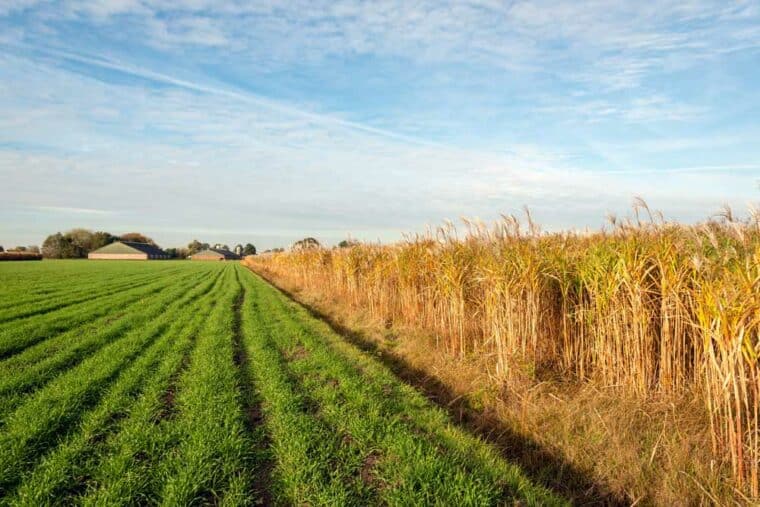Author: Kritika Bhardwaj
A new study has highlighted the danger to food security and climate mitigation of failing to switch to biomass production immediately. The study, published in Nature Climate Change, found that if current trends in land use and food production continue, the world will not be able to meet the growing population’s demands while reducing greenhouse gas emissions. This means that any delay in the uptake of new technologies that can help reduce the impact of climate change on food production could seriously impact food security, and simultaneously, on the potential for future biomass for energy production, in a positive feedback loop. The study’s authors indicate that the only way to meet these goals is to dramatically increase the amount of land devoted to biomass production for energy, including crops and trees. Researchers also estimate that this would need to increase by a factor of two to four by the end of the century and they underscore the urgency of transitioning to a more sustainable model of food production.
According to a new study by the United Nations, the world population is projected to reach 9.8 billion in 2050; therefore, we must find ways to produce more food with fewer emissions. Biomass production is a vital part of this equation, and we must act now to make the switch. The world needs to increase its use of biomass for energy by a factor of four by 2050 to meet climate change goals and ensure food security. Currently, biomass accounts for around 10% of the world’s primary energy supply study found that this needs to increase to approximately 40% by 2050 to meet the goals set out in the Paris Agreement on climate change. The study also found that using biomass can help improve food security, providing the energy source for cooking, heating, and powering agricultural machinery and is a clean, renewable resource that doesn’t release harmful greenhouse gases into the atmosphere.
Thus, many are shifting towards biomass-based carbon removal technologies to reduce atmospheric concentrations of greenhouse gases. Biomass-based carbon removal offers a way to remove carbon dioxide from the atmosphere and store it in a solid form, such as in trees or plants. It is a more sustainable and environmentally friendly alternative and involves using machines to remove carbon dioxide from the atmosphere, which is then stored underground, correspondingly mitigating climate change. Some examples of these technologies include carbon capture and storage, bioenergy with carbon capture and storage (BECCS), and direct air capture (DAC).
BECCS involves using biomass to generate energy while capturing and storing carbon dioxide emissions. It is a crucial technology for meeting negative emissions targets and avoiding dangerous levels of climate change. However, the study finds that the capacity of BECCS to remove carbon dioxide from the atmosphere could decline sharply as the world warms due to reduced biomass feedstocks. Therefore, if the crop yields are reduced, it will directly impact the ability of BECCS to meet the 2°C Paris goal as it relies on crops for its feedstock.
The research also reported, “Future crop yields, however, may decline owing to the detrimental effects of climate warming if strong mitigation actions are delayed, thereby reducing the capacity of BECCS for mitigation.” The study used a global climate model to simulate the effects of a 20-year delay in mitigation from 2040 to 2060. The model showed that a delay in the deployment of BECCS would lead to accelerated global warming, reducing the amount of biomass available for BECCS. In other words, the study’s findings highlighted the need for rapid deployment of BECCS to mitigate the effects of climate change.
The model also suggested that if the world warms by more than 1.5 °C, the risk of hunger could increase by up to 50% in some developing countries and threaten food security. For one, higher temperatures can lead to crop failure as droughts and floods are becoming more common, which can damage crops disrupting food production with increased food prices. Furthermore, extreme weather events are becoming more frequent and intense, making it difficult for farmers to protect their crops. The study also found that the impacts of climate change on food security are likely to be felt most keenly in developed countries. This is because developed countries are more likely to import food from developing countries affected by climate change.
IPCC has also released a report which warns that we have just twelve years to take decisive action to avoid a climate change catastrophe. The report says that to constrain global warming to 1.5°C, we must make “rapid and far-reaching” changes to how we live. The report’s authors say this is necessary to avoid “irreversible” damage to the planet, including more extreme weather events, rising sea levels, and plant and animal species mass extinction. They say that we must reduce our carbon emissions by 45% by 2030 and to net zero by 2050.
Hence, biomass-based carbon removal technology has great potential; in the future, it could become an essential tool in the fight against climate change.
Author: Kritika Bhardwaj
As the world awakens to the reality of climate change, the consequences of global warming become increasingly evident. With devastating hurricanes, floods, droughts, widespread hunger, and insect outbreaks making headlines worldwide, the need for action to avert the worst potential environmental change scenarios is undeniably clear. The key driver of global warming is the release of greenhouse gases, such as carbon dioxide, methane, and nitrous oxide, into the atmosphere. These gases trap energy from the sun, causing the Earth’s temperature to rise. Energy generation is the foremost contributor to current global greenhouse gas emissions, particularly in systems which rely on the combustion of fossil fuels like coal or gas.
As a result of the pressing need for change, the UK government has implemented the Net Zero programme, which aims to reduce greenhouse gas emissions by 80% by 2050, compared to 1990 levels. This programme has several interim goals set to meet this target, including a 50% reduction of emissions by 2025. Consequently, in order to meet these goals, the UK will need to significantly reduce emissions from all sectors of the economy, including power generation, industry, transport and buildings.

A shift towards more significant generation through renewable sources, such as solar and wind power, is an essential feature of future UK energy production. In addition, another powerful renewable resource is biomass production, which relies on the combustion of organic matter. To support the development of the biomass production sector, the UK government have announced £32 million of funding for the Biomass Feedstocks Innovation Programme (BFIP), which will support the UK’s transition to a low-carbon economy.
Perennial biomass crops live more than two years and are most often organisms like willow and poplar trees or fast-growing grasses, such as switchgrass and miscanthus. These are cultivated for their woody or cellulosic biomass and can be used to produce pellets, chips or wood-based fuels.
Currently, miscanthus and short-rotation coppice willow are regarded as the UK’s most promising sustainable perennial biomass crops (PBCs). Miscanthus yields up to 15 tonnes per hectare per year compared to the best-yielding annual crops (such as wheat and barley); they only achieve around 6-8 tonnes per hectare. Furthermore, short-rotation coppice willow is another promising PBC, as it can be grown on marginal land unsuitable for other crops. These crops provide renewable energy sources by capturing carbon dioxide (CO2) from the atmosphere during photosynthesis and storing this carbon in the above or below-ground plant biomass. These crops are converted to energy during the combustion process at harvest, releasing carbon as CO2. However, the application of bioenergy carbon capture and storage (BECCS) technology, plant-stored carbon can be captured at the combustion stage, avoiding emission to the atmosphere. BECCS can therefore be used as a technology for greenhouse gas removal to help the UK achieve its target to be “net zero” by 2050.
Research undertaken in the US as part of the Biological and Environmental Research (BER) programme has reported that perennial biomass crops like miscanthus and switchgrass offer large carbon sinks and are more productive alternatives to traditional annual crops like maise-soybean rotation crops. Perennials are well-suited for biomass production and don’t need to be replanted yearly. A key feature of PBCs is that they capture carbon dioxide from the atmosphere more efficiently than annual crops and can be grown in various climates and soils. PBCs are typically drought and pest-resistant and require fewer water inputs, fertilisers, and pesticides than annual crops, making them more environmentally friendly.
The UK’s renewable ethanol industry is now playing a significant role in helping to meet the country’s renewable energy targets and is expected to continue to grow in the years ahead. Bioenergy crops are naturally low-maintenance and are an excellent alternative to coal-burning factories. Bioenergy crops are also effectively used for bioethanol production, which can be used in gasoline engines, creating less polluting fuel.

Biodiesel is another potential majorly used in diesel engines, thus, reducing emissions. Bio-products, including bioplastics and biopolymers, are used in multiple applications, including packaging, construction, and automotive parts.
The market of PBCs will continue to grow in the UK and beyond as the world looks for opportunities to reduce its dependence on fossil fuels whilst maintaining energy production levels. With the right incentives and support for farmers, it will be possible to increase the amount of PBC production in the UK to match the future needs of energy producers to provide a stable and reliable supply of these renewable and green feedstock options.
